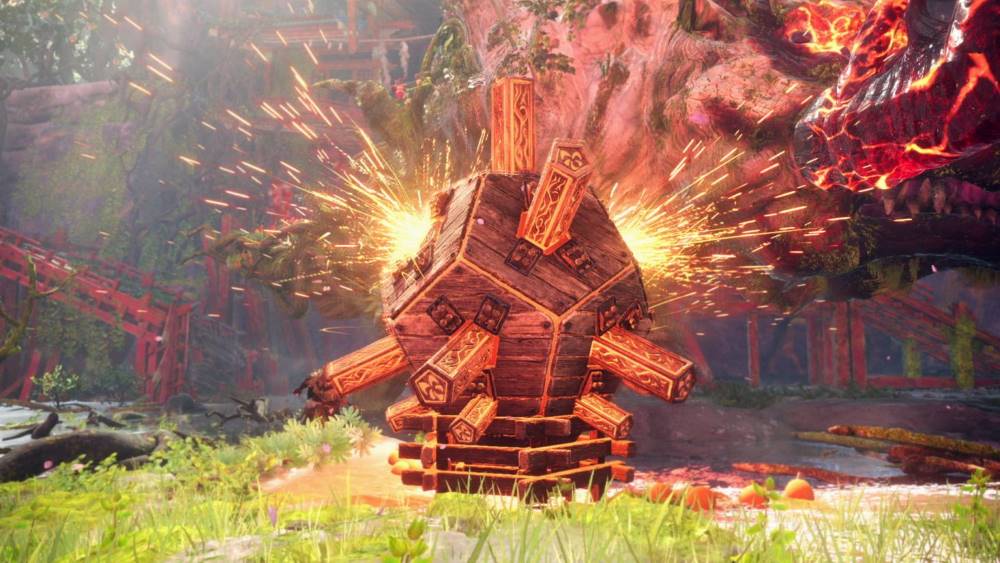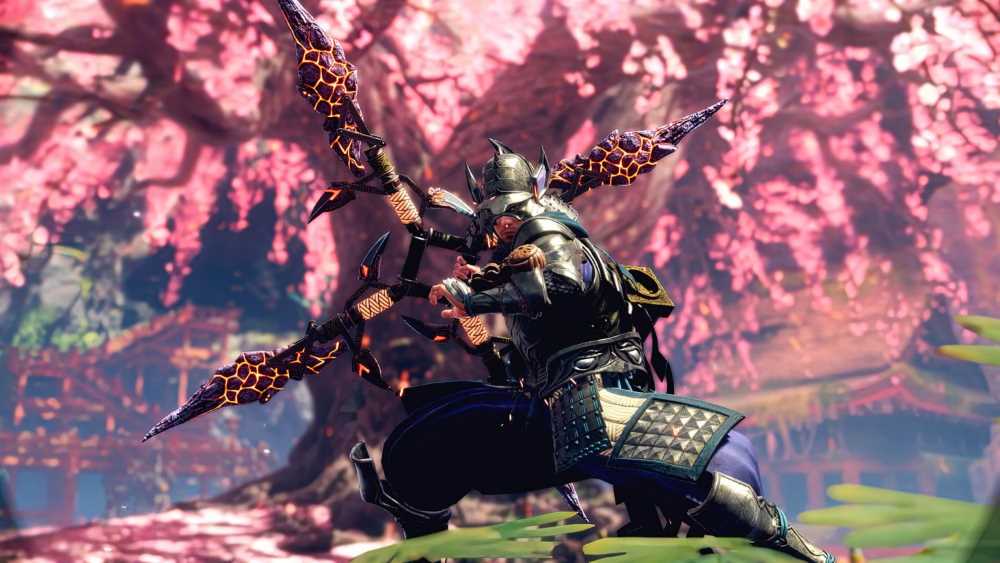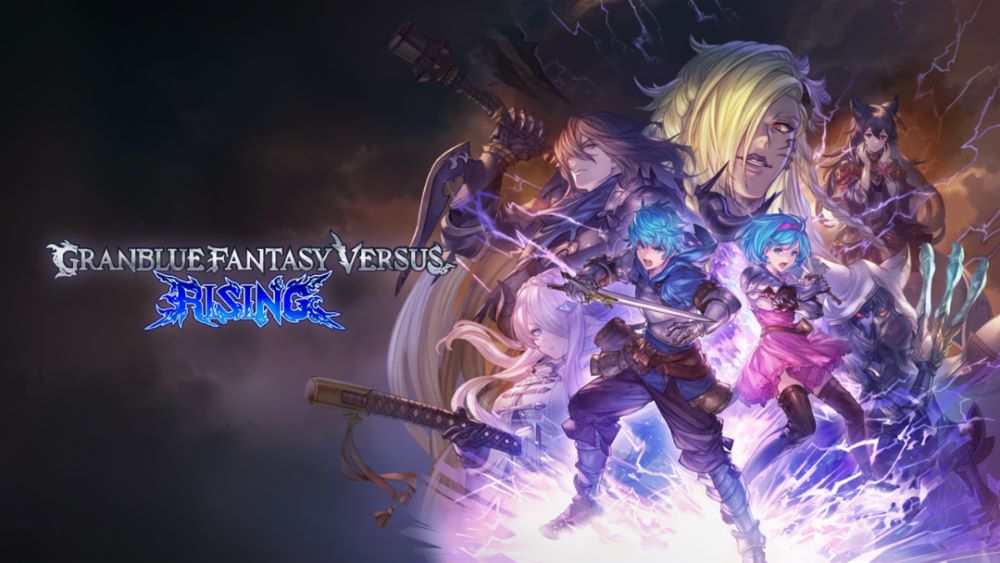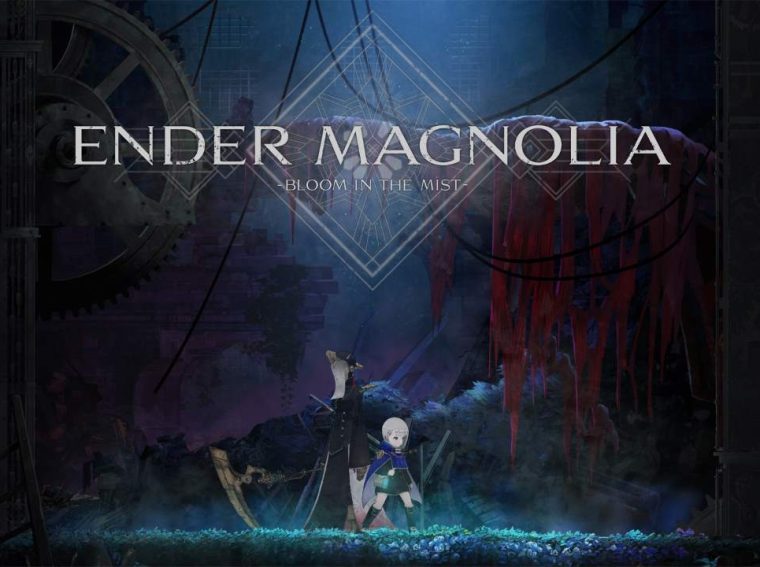Wild Hearts Review – Kemono Killers
Wild Hearts Review
Wild Hearts is an upcoming action RPG that is EA and Koei Tecmo’s entry in the hugely popular monster hunter pie. This isn’t KT’s first dance with the genre, releasing the Toukiden series to moderate success a number of years ago. Now, with backing from EA Originals, the time is ripe for a potential competitor to Capcom’s unrivaled Monster Hunter series.
We first got to play the game back in October last year, and we thought that the game had what it took to carve out a player base of its own. With the introduction of the Karakuri mechanic, a Fortnite-esque system that allows players to build contraptions that will assist them in and out of battles, the game looked poised for a good outing, further reinforced by our final preview just a few days ago.
Sadly, even when trying to avoid comparisons, it’s tough to talk about one without bringing up the other. Does Wild Hearts do enough to stand outside the looming shadow of Capcom’s beast? Or will it fall prey to the behemoth like others have before it?
Weapons of War
To excessively simplify things, Wild Hearts is a game about hunting larger-than-life monsters, picking up the spoils of the hunt, and using them to craft many weapon and armor pieces that will allow players to hunt the next monster in line. This simple yet highly addictive loop is a tried-and-tested formula, thanks in large part to its satisfying and challenging combat.
Wild Hearts wears its inspiration on its sleeve, and Monster Hunter veterans will surely find many similarities between both titles. From food buffs to companions called Tsukomos, it sometimes feels like they may be too similar, but there are a few things that Wild Hearts does to separate itself from the pack, resulting in a more accessible and beginner-friendly outing.
One key feature of Wild Hearts is its Karakuri system, which is basically a way for players to build contraptions across the map for various purposes. In simpler terms, it feels and works very much as it would in Fortnite and actually proves to be a great feature that adds a welcome layer of strategy to the game and a refreshing take on the aging formula.
Dragon Karakuri is a type of Karakuri that can be built to provide hunters with some quality-of-life upgrades. Some examples of Dragon Karakuri are a Hunter’s Tent (which provides another respawn point on the map), a Flying Vine (which creates a zipline between points for easy travel), and even a Hunting Tower (which tracks Kemono’s across the map). Locations will have a limit to how many of these you can build, so upgrading what’s called a Dragon Pit will allow you to build more.
Basic Karakuri such as the Crate and Spring are multipurpose tools that can assist with exploration or battle. Building these will require Celestial Thread, a consumable resource that can be obtained from the various resource plots in the area. The next evolution, called the Fusion Karakuri, requires a combination of components that will create more powerful variants such as the Pounder and the Bulwark.
Fusion Karakuri cannot be unlocked normally and will require a flash of inspiration during certain sequences to build. During a battle with King Tusk, players will be faced with a tough move to dodge or counter, so building six crates stacked beside each other will result in a Bulwark that will knock the King Tusk Down.
Wild Hearts uses this Karakuri system to great effect, and battling the many Kemonos will require mastery of these tools for a fighting chance. While not required, engaging with the system will result in a drastic change in the way battles play out and can be likened to how the Wirebug from Monster Hunter Rise allowed for a faster-paced and more flashy playstyle. It can take a while to get used to, but it really becomes second nature sooner rather than later.
It has to be said that the Karakuri will be persistent in your world, and it shouldn’t be surprising to see some Crates and Springs strewn across the battlefield on your next hunt. In terms of comparisons, you can actually liken it to Death Stranding to some degree, with Karakuri being left behind after an exhilarating hunt. This even applies to the ziplines and crates used for traversal, which will be available to use by you or by another hunter joining your world.

A couple of major components that define the success of a hunting game lie in its weapons/armor and monsters, and Wild Hearts also has those in relatively good yet simple amounts.
Wild Hearts has a number of different weapons to choose from, and while most of them have their Monster Hunter counterparts along with similar attacks (Bow, Hammer, etc), the game streamlines it a bit by merging some functions from different weapons into one, such as the Karakuri staff that can mutate between five different forms like a polearm and a shuriken.
As expected, each of these weapons will offer a distinct playstyle that will require precision and nuance that must be understood to make the most of them. Most attack animations, if not all, cannot be canceled, so players will need to learn when to commit to going on the offensive or be patient to employ damaging counterattacks. Some button presses will also translate to a different attack based on what part of the combo you’re on, so learning the ins and outs of each weapon is integral.
Weapon and armor upgrading also requires materials from the Kemonos and will also offer various branching paths that will offer different attributes. Veteran hunters will be familiar with keeping a specific loadout for certain monsters, and the same can also be said with Wild Hearts, where specific weapons will be needed to take advantage of the Kemono’s weaknesses.
It has to be said that upgrading in Wild Hearts is much more streamlined compared to Monster Hunter. Here, you’re just looking to upgrade to the next piece or set instead of tinkering with each individual piece. Weapons are also mostly the same, where you just look forward to the next one that, overall, is less centered on emphasizing build creativity. Weapon upgrading also felt slower overall, and it takes a while to get to that next tier compared to Monster Hunter.
The More The Merrier
If anything, the learning curve in Wild Hearts feels a bit easier, and it wouldn’t be hard to imagine that the developers may have wanted to give players a smoother onboarding process compared to the steeper difficulty curve of Monster Hunter. There’s a definite wall at some point, but solo hunting mostly feels okay with splashes of difficulty here and there.
There are a lot of the pre-hunt preparations in Monster Hunter that are not present here, and while veterans may see this as a knock on the game, introducing new players to the genre is something Wild Hearts does very well.
In fact, one more thing Wild Hearts succeeds in is multiplayer, allowing for a variety of ways players can join up for a session. Based on my time with the game, joining or creating a multiplayer session felt easier and faster with almost no hints of lag, oftentimes just requiring a couple of clicks either from the map menu or from the camp fireplace to request assistance.
Admittedly, with a small number of players in the game during the review period, matching up would certainly be something to watch out for when the servers finally open up on launch day as the sudden influx of players could affect in-game performance.

Of course, we can’t talk about a monster hunting game without talking about the monsters themselves. In Wild Hearts, the Kemonos are nature-infused beasts that are very well-designed but also a bit too safe, with some competent battle mechanics to match. One moment you’re battling an oversized rodent with a spore-like tail, and the next you’re off to conquer a lava-spewing gorilla that seemingly has moves plucked right out of WWE territory. Some beasts have tamer designs, but most look really impressive.
Sadly, the latter half of the campaign mode proved to be more of the same Kemonos, just variants, rather than totally new ones. I’ll touch on this again quickly below.
The environment is quite a sight to behold as well, and there are a variety of settings from a serene field of grass to a ravaged temple and even snow-capped plains (the snow effect does not look good at all!) that make for an epic backdrop to a fight. That said, while playing in performance mode, Wild Hearts didn’t look as sharp as we wanted it to, and the images appeared to be soft in a lot of places. This was certainly disappointing, considering that it is a current-gen-only title.
Performance was quite steady and solid, even with two other players joining the hunt. Without tools to specifically monitor, frame rates seemed to hold steady, although there may have been a couple of drops here and there. That said, frame rate drops during performance mode are extremely disappointing, much more so when playing in quality mode.

Considering Monster Hunter Rise launched with over 60 monsters (World launched with over 50), the Kemono list in Wild Hearts isn’t looking too hot. The game is launching with a far lower number, and while more will be added post-launch via free DLC, the number is dangerously low. Of course, it is a bit unfair to compare the titles directly, as one has had a number of years to build up its huge monster bank, so we’d like to see how far this launch number can take the game.
What We Liked:
- Karakuri System is a fun and engaging mechanic
- The core loop of continuous hunting and upgrading is satisfying and addictive
- Online multiplayer is an absolute breeze to use
- Kemono designs are fantastic
What We Didn’t Like:
- Some folks might find it too similar to Monster Hunter
- Kemono number at launch is a bit low and relies on slight design tweaks
- Companion pets don’t feel as useful
Verdict: Buy It!

Considering this is a new IP, Wild Hearts is a surprisingly competent outing from EA Originals and Koei Tecmo, taking the rock-solid monster-hunting base and adding a unique twist that elevates the gameplay experience to great effect. The Karakuri add another layer of strategy, and while players can choose not to engage with them, utilizing them properly opens up a lot of hunting possibilities.
With games of this type, success is usually reliant on the amount and speed of post-launch updates it can offer players, and Wild Hearts is treading on thin ice with a fairly low number of Kemonos at launch. Still, the current roster is diverse and creatively designed, making them excellent adversaries in the field.
*Wild Hearts was reviewed on a PS5 with a review code provided by the publisher.









